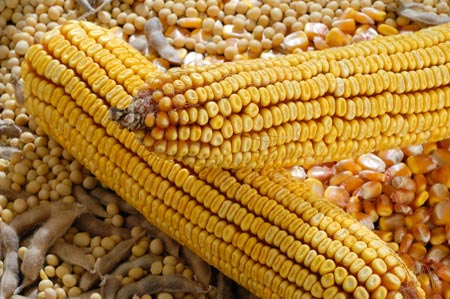 (Reuters) – U.S. corn futures rose for the second consecutive session on Monday and have now risen more than 2 percent to a near-two-week high after a U.S. Department of Agriculture (USDA) crop forecast for the United States that was lower than expected.
(Reuters) – U.S. corn futures rose for the second consecutive session on Monday and have now risen more than 2 percent to a near-two-week high after a U.S. Department of Agriculture (USDA) crop forecast for the United States that was lower than expected.
Soybeans slipped back, having jumped more than 2 percent on Friday, the biggest increase in eight weeks, and wheat also fell.
Chicago Board of Trade December corn rose 0.59 percent to $4.29-1/2 a bushel, trading just below the session high of $4.30-3/4 a bushel, which was the highest since Oct. 31. Corn closed up 1.5 percent on Friday.
“The USDA’s final production figure, while being revised to a record, still fell under the magical 14 billion bushel mark,” said Luke Mathews, a commodities strategist at the Commonwealth Bank of Australia. “That smaller-than-expected upgrade supported short-covering on Friday and that positive tone seems to have extended into early Asian trading.”
USDA said U.S. corn production would total 13.989 billion bushels, based on an average yield of 160.4 bushels per acre.
Analysts had forecast the USDA would put the crop at 14.003 billion bushels and an average yield of 158.933 bushels per acre.
January soybeans fell 0.15 percent to $12.94 a bushel, having firmed 2.3 percent on Friday.
Beans had firmed after the USDA put global ending stocks of soybeans at 170.23 million tonnes, more than 2 million tonnes below the average of trade forecasts.
The USDA said U.S. soybean crop production would total 3.258 billion bushels, the third-largest on record and 1 percent larger than the analysts had expected.
Brazil raised its official forecasts for its 2013/14 corn and soybean harvests, with soy output seen at a record high.
December wheat was little changed at $6.49-1/2 a bushel, having closed down 0.5 percent on Friday.
Wheat was under pressure from the USDA’s estimate for ending stocks of 565 million bushels, well above expectations of 516 million bushels. Higher flour extraction rates reduced demand for food wheat, the USDA said.




